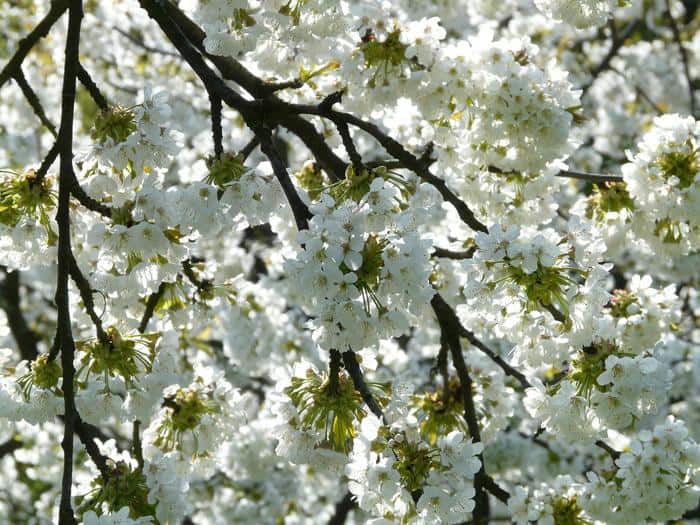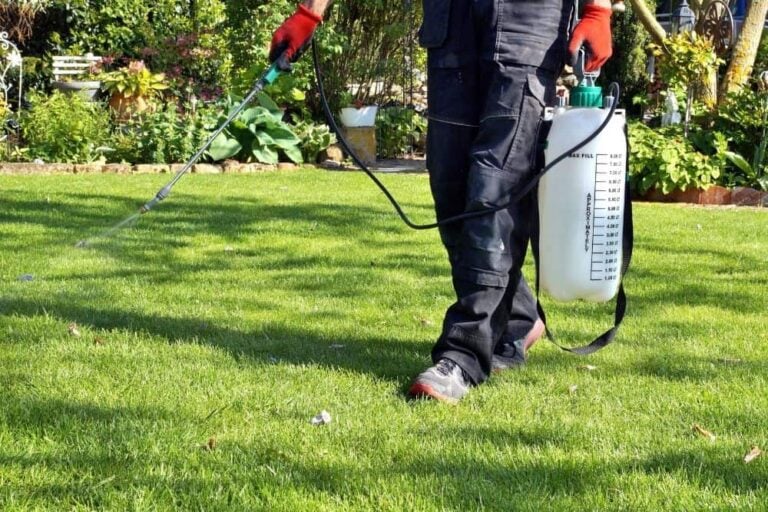What Are The Weeds With Purple Flowers Called?
We all enjoy beautiful looking, colorful flowers. When they are where you want them to be, in their proper place, they can produce gorgeous plants with a wonderful aesthetic in your garden.
However, when these purple, flower bearing plants start to over-run your lawn, or take over from the plants in your garden, they go from being pretty to a pest, and these are weeds.
What makes things even harder for the avid gardener is that there are a number of weeds that bear purple flowers, so trying to identify what the pest in your garden actually is can be a bit difficult. You may find yourself asking ‘what weeds have purple flowers’, and you’ll end up bombarded with different types.
That is why we are here. We have got your back and will talk you through the many types of purple flower baring weeds so that you can define which is which and resolve your issue pronto.
There are four main weeds that have purple flowers, let’s take a look at them and look at how we can eliminate each of them from your lawn or flowerbeds.
This is war.
There Are Four Weeds With Purple Flowers
If you are finding purple flowered weeds in your garden, there are a few that could be the culprits. They are beautiful to have, but a pest when they are in the wrong place, and can easily become aggravatingly dominating in your garden.
There are four main types of weeds that have purple flowers, and these four are the main suspects in any case of invasive purple flowers taking over your landscape.
They are;
- Creeping Charlie (Also known as ground ivy)
- Purple Deadnettle
- Henbit
- Wild Violet
We will look at each of these culprits one by one. You need to identify these flowers, wherever they are, so we will look at each in detail, so you can be certain which of these four is the one that is driving your green fingers mad.
But, before we fire away at investigating these four shady suspects, let’s take a moment to look at how we can eliminate them.
How Do You Kill Them?
Any green-fingered garden goer will know that the best method for ridding yourself of any pesky pests taking over the clean and carefully planned aesthetic of your garden, is to uproot them by hand-pulling. This is the best and most organic method to eliminate most weeds.
A good back-up plan is to spray with a vinegar solution, which is also an organic method.
Out of every method, herbicides are the most effective if you are open to them, but if you do delve into using these, be sure to wear PPE, and strictly follow all the safety guidelines recommended by the manufacturer.
A majority of the weeds that have purple flowers you will find typically fall under the ‘broadleaf weed’ category. This means that Dicamba will usually kill most of these plants off.
You can find any effective herbicide solution at your local hardware store, but always make sure that you are careful when using these products, and ensure that your other plants are safe from its effects too.
Now, onto the suspects.
A Look At Creeping Charlie
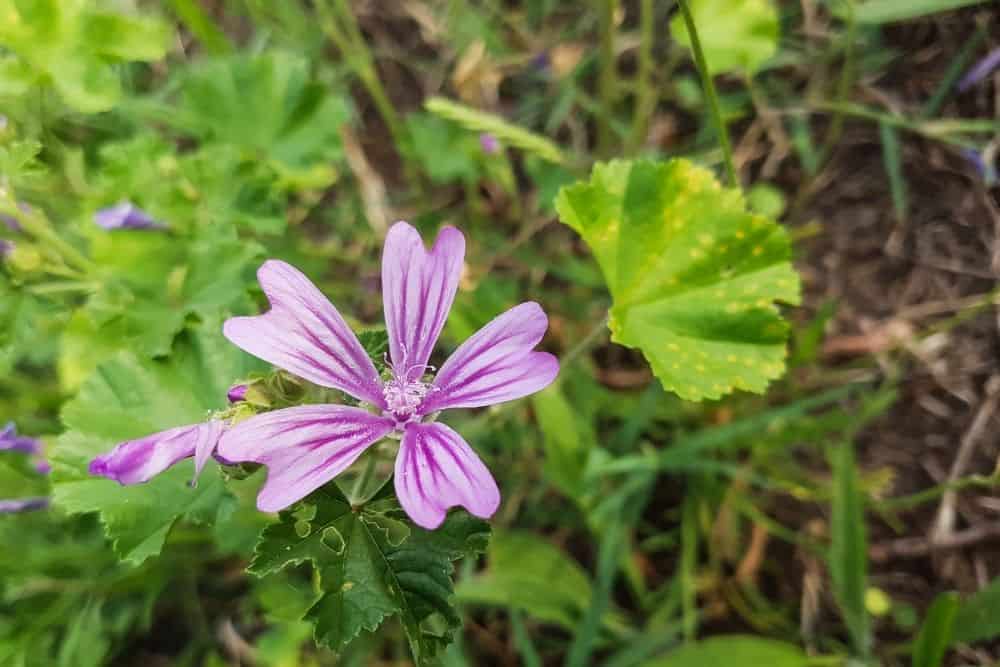
Our first suspect is Creeping Charlie, otherwise known as ground ivy.
What Is Creeping Charlie?
Creeping Charlie, which is also known as ground ivy, is a broadleaf weed and is a member of the mint family. This is a branching weed which grows only about an inch high, but it will quickly become a low-growing mat of stems and leaves scattered sporadically about your yard.
If you have a great deal of purple blooms scattered around your yard in a haphazard manner, then this fast spreading weed is likely the culprit. It is often battled by many in lawns.
At a first glance, Creeping Charlie’s delicate scalloped leaves, and it’s blue-violet spring flowers look tolerable, and pretty. But, this is a facade. It is a resilient plant, and its adaptive vine can quickly overtake your lawn and kill off the surrounding turfgrass.
One reason that this weed is so resilient is down to that it is not vulnerable to pests or diseases. So, if you are hoping it will just go away as a result of some pests getting to it, or a disease taking it, then this will end up worse. Hoping it will leave will just give it more time to spread and take over your lawn.
While this weed is very undesirable to have present in your lawn, its delicate purple flowers are not entirely horrible.
In proper conditions, these blooms can and do attract honey bees, bumblebees and mason bees. Supporting pollinators is great, and helping the bees is absolutely vital in modern day. But, let’s be totally honest, there are better ways that you can support the bees… Sunflowers and Lavender, for example.
Where Will I Find Creeping Charlie?
Creeping Charlie is hardy in zone two through twelve, which makes it a nuisance almost everywhere. As it is super resilient, it thrives in even the harshest of conditions. Although, it does definitely prefer partial sun and moist, fertile soil.
Like a majority of lawn weeds, Creeping Charlie seems to prefer unhealthy lawns. Most lawns will be susceptible to weeds if they are not properly maintained.
To properly avoid the appearance of weeds in the lawn, regular mowing, watering, and fertilizing is one of the best ways to prevent it from appearing in the first place.
When healthy, well-fed grass grows extra thick, it leaves no room for weeds to appear, this includes the hardy Creeping Charlie weeds.
How Do I Get Rid Of Creeping Charlie?
Despite how Creeping Charlie is considered to be a broadleaf weed, it is not affected by all broadleaf herbicides. Most methods of tackling this pesky weed are rather ineffective, as what is seen on the surface of your lawn is only one part of the problem.
This particular variety of weed does have vining rhizomes underground, and these are especially troublesome to get rid of. Unfortunately, the best way you can eradicate this pest from your yard is to use professional level herbicides.
A natural method such as placing a tarp over the ground, and starving the weed will also work. However, this method also has a downside as it will also be depriving the grass of the sunlight too.
If you have a smaller infestation, and caught it early on in its garden invasion, you can resort to old-reliable, getting on your hands and knees and uprooting the plant with your bare hands.
A Look At Purple Deadnettle
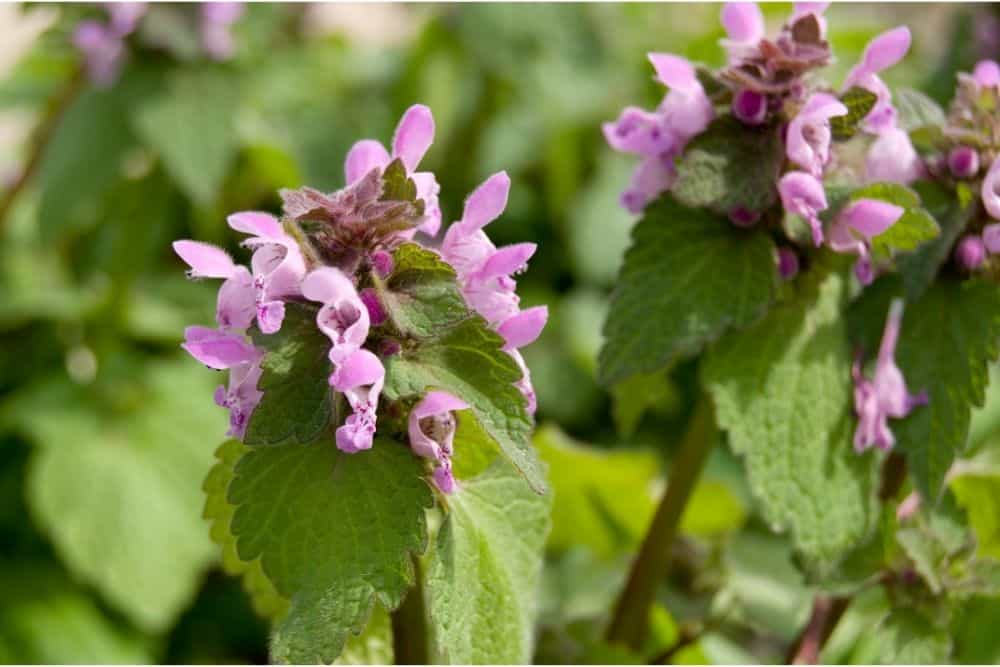
Our next suspect is Purple Deadnettle. Yet another enemy in our fight against purple-flowered weeds.
What Is Purple Deadnettle?
Purple Deadnettle, also known as Lamium Purpureum, is a pesky weed which is derived from the mint family. This common weed is characterized by its purplish-pink flowers, but it also has a distinctive stem and leaves.
It has a square shaped stem, and a lower and upper section. The lower section of the stem is bare, with no foliage at all. However, the upper part of the plant bears purplish colored leaves with triangular tips. These leaves have petioles, or stems, which connect them to the main stem.
Where Will I Find Purple Deadnettle?
If you are curious as to where you might find this weed, then note that Purple Deadnettle typically prefers a rather unsavory habitat. It can thrive in very moist areas such as drainage ditches, fallow fields, weedy edges of woodland, and even waste areas.
Since it prefers these unpleasant types of places, it does mean that Purple Deadnettle is no massive threat to your lawn.
Yet, if your lawn is rather moist, which could be the case if you have an irrigation system, or if it is close to a field or woodland area with a Purple Deadnettle infestation, then your yard might actually be at greater risk than you think. So, be prepared for a battle to the death.
How Do I Get Rid Of Purple Deadnettle?
The best way to fight against Purple Deadnettle is to prevent it in the first place. Prevention is always desired in place of a cure. This weed is typically a winter annual plant, which means if you can stop the seed production in the spring, then your whole problem is automatically solved.
One of the best ways to fight this is by herbicide application. It eliminates easily if you apply it in the early spring months before it begins to bloom, catch it with its pants down at this time of year, and you won’t suffer for it later on.
Yet, some people may prefer waiting until later in the year and trying more organic ways of getting rid of your acreage of weeds.
You don’t typically want to till your whole lawn, but the reality is that Purple Deadnettle will not attack your grass lawn, but instead it will attack the edges and small sections of your lawn here and there, where conditions are ideal for it to grow.
This pest will rear its ugly head in totally random places, it might pop up in your garden plot, or in the perimeter of your yard. In these areas, the best way to tackle it is organic tillage or solarization.
A Look At Henbit
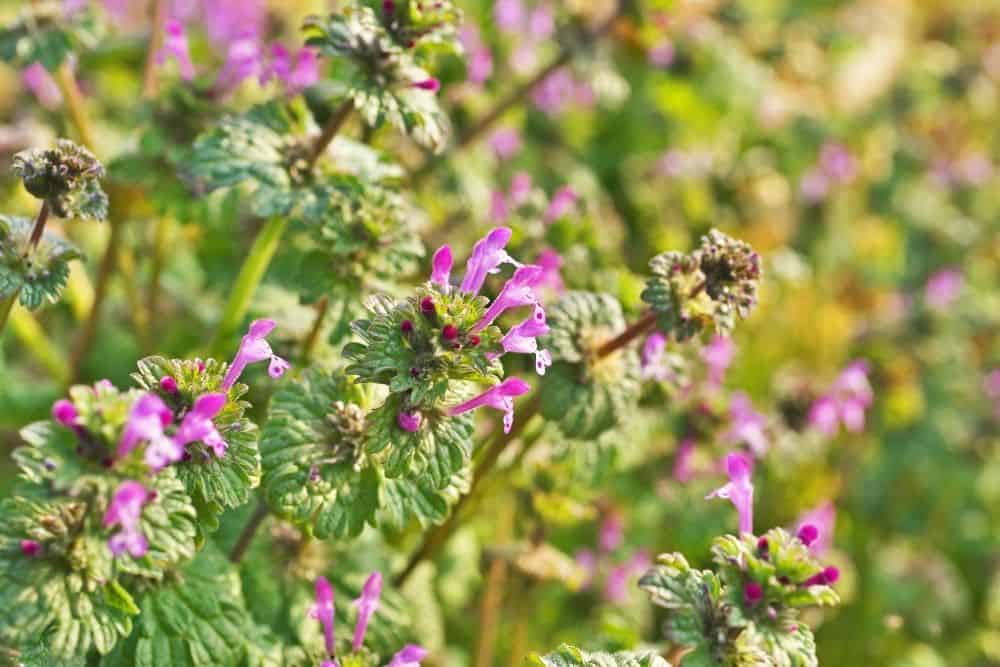
Henbit is our third suspect, and it is not unlike Purple Deadnettle.
What Is Henbit?
Henbit is yet another widespread weed that will most likely attack the edges of your yard. It also has the signature purple flowers that the aforementioned weeds possess. At a first glance it can easily be confused with Purple Deadnettle, however if you look closely there are some telltale differences between the two.
Henbit has the same square stem that divides into two sections. Yet, it has more rounded leaves with deep lobes. Unlike Purple Deadnettle however, the leaves on the upper stem do not have petioles. Instead, they are directly attached to the main stem.
The most apparent visual difference between Purple Deadnettle and Henbit, is that Henbit leaves have an almost ‘hairy’ appearance. So if you find this in your garden, look for hairy leaves to define between the two and fight your infestation better.
Where Will I Find Henbit?
This weed and Purple Deadnettle are very similar in where they appear, too. You will find it around the edge of your yard, in fields, fallow areas, in your garden, and next to buildings.
This is not a weed that will usually appear in your actual lawn, so if you have purple flowered weeds appearing in your grass, it is unlikely to be Henbit.
How Do I Get Rid Of Henbit?
Henbit seeds spread through seed production, and so preventing the seeds from forming is the biggest weapon you have in controlling this weed.
Herbicide application in the early spring is your best bet to destroy the seed production in Henbit, much like with Purple Deadnettle. However, if you wait until the purple flowers appear, it is already too late and your herbicides will be ineffective.
Even if your most powerful herbicide is useless once it begins to bloom, you are not lost yet.
Organic methods can be of use here, and these methods are pretty standard in eliminating the weeds. You can control small patches with old-reliable hand pulling. Just be very careful to control inadvertent seeding. Carefully pull the plants and put them into a bucket or a sack, never leave them on the ground post pulling.
If you have a larger infestation, you can manage these with early spring and fall with tillage, such as you would with Purple Deadnettle.
A Look At Wild Violet
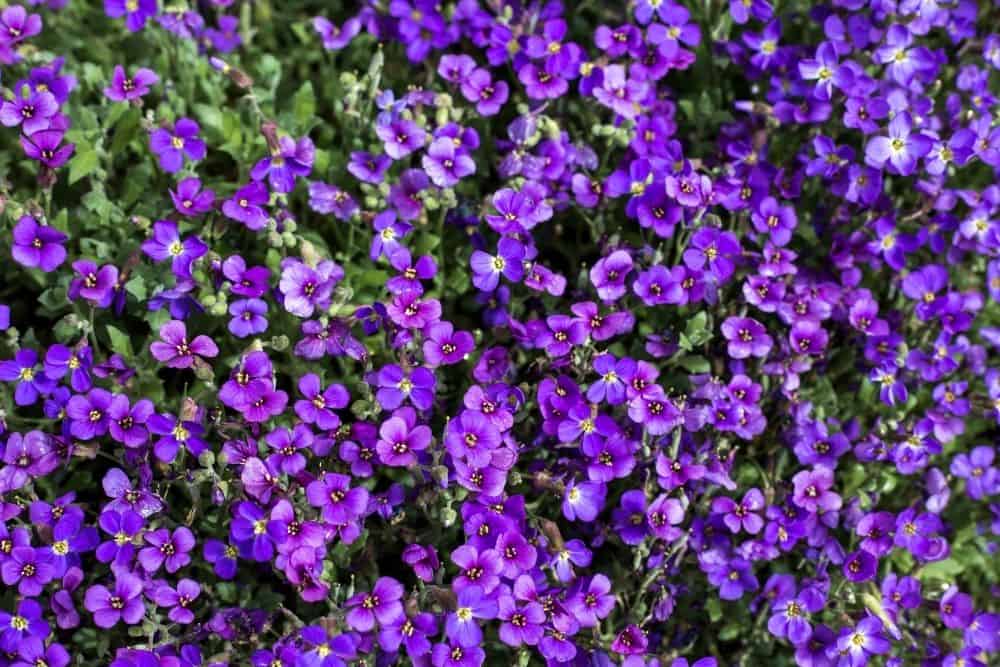
Our final suspect- Wild Violet. A wonderful flower and an annoying pest all at once.
What Is Wild Violet?
The jury is out on this plant, there are some that affectionately call it a flower and revel in its beauty, yet others detest its presence and want it gone with a vengeance. For our purposes, looking at the presence of this plant in your lawn, it is a weed.
It is a perennial bloomer, with deep green heart shaped leaves, with delicate stems. The stems do, of course, support a pretty flower, which is why so many love it.
Where Will I Find Wild Violet?
Wild violets love a moist and shady environment, although the mature plants are drought tolerant.
This detail means that wild violet can originate in an ideal ground such as your yard, it could be found under a tree, or near a shaded downspout. However, it can spread to anywhere it wants with one of its two clever methods.
The unattractive part about this plant, and the reason why so many dislike it, is that it spread in two ways. The first being that it can propagate from seeds that form in low bearing flowers which will not open, and these seeds end up anywhere thanks to windfall or rain.
It also spreads via rhizomes under the ground, and people who battle this type will tell you it ends up in places you just do not want it. Wild violet is also rather resilient, it adapts to mowing by growing shorter, and can doge the blade and gives itself extra time to develop seeds.
How Do I Get Rid Of Wild Violet?
Much like the others, your best bet is herbicide or hand pulling. Due to both seeds and rhizomes, make sure you dispose of these properly, to avoid regrowth.
Hand pulling does usually require a few sessions, though.
To Conclude – Purple Flowers Are Not Always Pretty
Looking out at your masterpiece garden, you want the purple flowers present to be intentional, and where you want them. When weeds become an issue, there are solutions to get rid of them, and stop a return. Whatever type it is, you are not stuck with them forever. They may have won the battle, but you will win the war.

